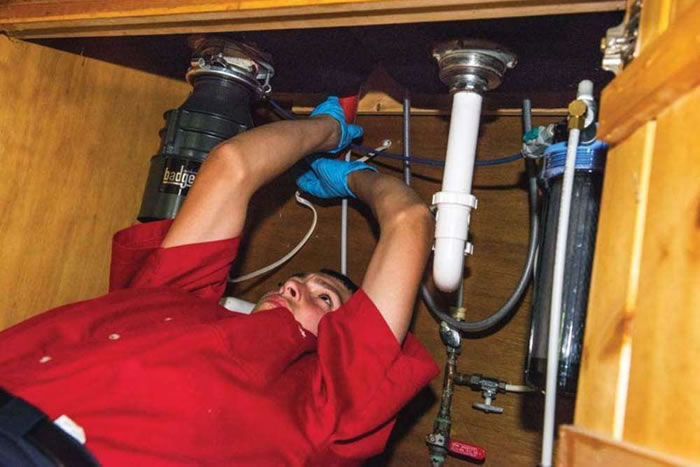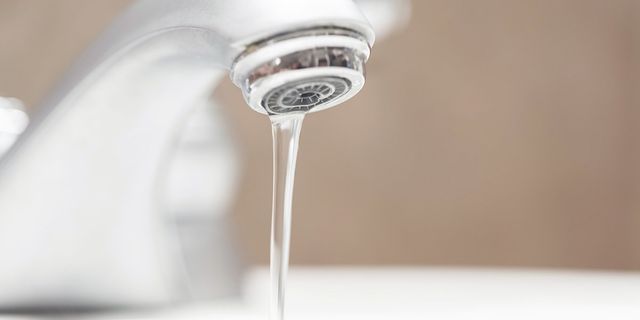This post in the next paragraphs about 4 Ways to Troubleshoot Low Water Pressure is absolutely remarkable. Check it out for your own benefit and see what you think about it.

Low tide stress in your house can be an irritating problem, affecting everything from showering to washing dishes. If you're experiencing weak water flow, there are a number of feasible reasons and solutions to explore. In this guide, we'll talk about common reasons for low tide stress and sensible actions to resolve the problem successfully.
Introduction to Low Water Stress
Low water pressure occurs when the flow of water from your faucets, showers, and other fixtures is weak than common. This can make day-to-day jobs more difficult and much less efficient. Recognizing the sources of low tide stress is critical to discovering the best option.
Common Root Causes Of Low Water Stress
Pipeline Obstructions
Over time, pipes can come to be clogged with natural resource, sediment, or particles, limiting the flow of water. This is an usual concern in older homes with galvanized steel pipes.
Rust
Corrosion within pipes can result in leaks and reduced water stress. Rust accumulation can constrict water circulation, especially in maturing plumbing systems.
Faulty Pressure Regulators
Stress regulators are responsible for keeping consistent water stress in your house. If they malfunction, it can lead to low tide pressure or uneven flow throughout your house.
Metropolitan Water System Issues
In some cases, the problem lies outside your home. Community water concerns, such as main line leakages or upkeep job, can temporarily decrease water stress in your location.
How to Detect Low Water Stress
Inspecting Faucets and Components
Beginning by checking the water pressure at various taps and components throughout your home. If the problem is separated to particular locations, it may show localized troubles.
Examining Pipelines
Evaluate noticeable pipelines for signs of leakages, deterioration, or blockages. Take notice of any uncommon audios, such as banging or rattling pipes, which might suggest issues within the plumbing system.
Consulting with a Plumber
If you're not able to identify the cause of low water pressure, think about hiring a specialist plumber to carry out a detailed evaluation. They can identify underlying issues and suggest proper solutions.
Do It Yourself Solutions to Take Care Of Low Water Pressure
Cleansing Aerators and Showerheads
Natural resources can gather in aerators and showerheads, reducing water circulation. Get rid of and clean up these parts consistently to enhance water pressure.
Flushing Water Heater
Sediment buildup in the water heater can limit flow and lower effectiveness. Flushing the container periodically aids eliminate sediment and keep ideal efficiency.
Inspecting Stress Regulatory Authority
Make certain that the pressure regulator is working correctly. Changing or changing the regulator can aid recover appropriate water stress throughout your home.
Cleaning Clogs in Pipes
For minor blockages, attempt making use of a plumbing snake or chemical drain cleaner to clear obstructions in pipelines. Beware when making use of chemicals and adhere to security standards.
When to Call an Expert Plumber
If do it yourself efforts fail to fix the concern or if you suspect substantial plumbing problems, it's ideal to seek aid from a licensed plumber. They have the expertise and devices to attend to complicated concerns securely and properly.
Preventive Measures to Maintain Water Stress
Regular Upkeep
Set up regular upkeep for your plumbing system to stop problems such as corrosion, leakages, and clogs. Attending to minor issues early can help avoid even more significant repair work later.
Setting Up a Stress Booster
Think about installing a pressure booster pump to improve water stress in areas with continually reduced flow. This can be especially advantageous for multi-story homes or homes with high-demand components.
Monitoring Water Use
Be mindful of water use behaviors and prevent ill-using the plumbing system. Basic adjustments, such as staggering showers and laundry lots, can assist preserve appropriate water pressure.
Final thought
Dealing with low tide pressure can be irritating, but recognizing the underlying reasons and applying appropriate options can restore optimal flow throughout your home. Whether it's cleaning up aerators, examining pipelines, or consulting with a plumber, taking positive steps can guarantee a consistent supply of water for your daily requirements.
FOUR WAYS TO FIX LOW WATER PRESSURE NOW
Turning on a shower or faucet only to find the water comes out in a sad, slow drizzle is never a good feeling. How exactly are you supposed to wash a pan or take a quick shower when it takes 10 minutes just to rinse off a little soap? The good news is that when your water pressure is bad, there's always a cause: typically one that can be easily fixed. Here are some of the most common causes of low pressure and what you can do to fix the issue:
DEBRIS AND MINERAL DEPOSIT BUILDUPS
If you notice low water pressure from just one or two of the fixtures in your house, the problem likely has to do with debris buildup. Water is full of minerals and other debris, all of which can accumulate in your pipes and on your fixtures. This can cause a blockage that affects how much water flows through. To fix this, try filling a small plastic bag with white vinegar, and use a rubber band to hang it around your showerhead or faucet. Let the head of the fixture soak for a few hours, and the vinegar should loosen the deposits.
WATER LEAKS
Leaks are another common cause of low water pressure. If water is flowing out of your plumbing through a hole or crack before it can reach your fixture, the pressure coming out of the faucet or showerhead will be lower. A plumbing professional is your best bet for finding and repairing a leak in your water supply pipes.
Leaks are another common cause of low water pressure. If water is flowing out of your plumbing through a hole or crack before it can reach your fixture, the pressure coming out of the faucet or showerhead will be lower. A plumbing professional is your best bet for finding and repairing a leak in your water supply pipes.
A VALVE ISSUE
If you have low water pressure throughout your home, check your main shut-off valve to make sure it's completely open. You may also want to see if there's a pressure-reducing valve installed. If there is, have a plumber help you adjust the settings to get the pressure you're looking for.
OTHERS USING WATER
Believe it or not, your low water pressure could be caused by your neighbors. If you notice low pressure at certain times of day, it may be because you and the people living next to you have similar schedules - when everyone is showering at the same time, the pressure will be lower in every home. Low pressure throughout the neighborhood may also be caused by an issue with your municipal water supply. If that's the case, call the supplier to see if they're working on the issue.
https://www.rotorooter.com/blog/water-leaking/low-water-pressure-fixes/

I discovered that blog posting about 9 Reasons for Low Water Pressure in Your House while doing a search on the web. Enjoyed reading our blog entry? Please quickly share it. Help somebody else find it. I enjoy your readership.
Visit Homepage
Comments on “Best Techniques for Dealing with Low Water Pressure in Your Home”